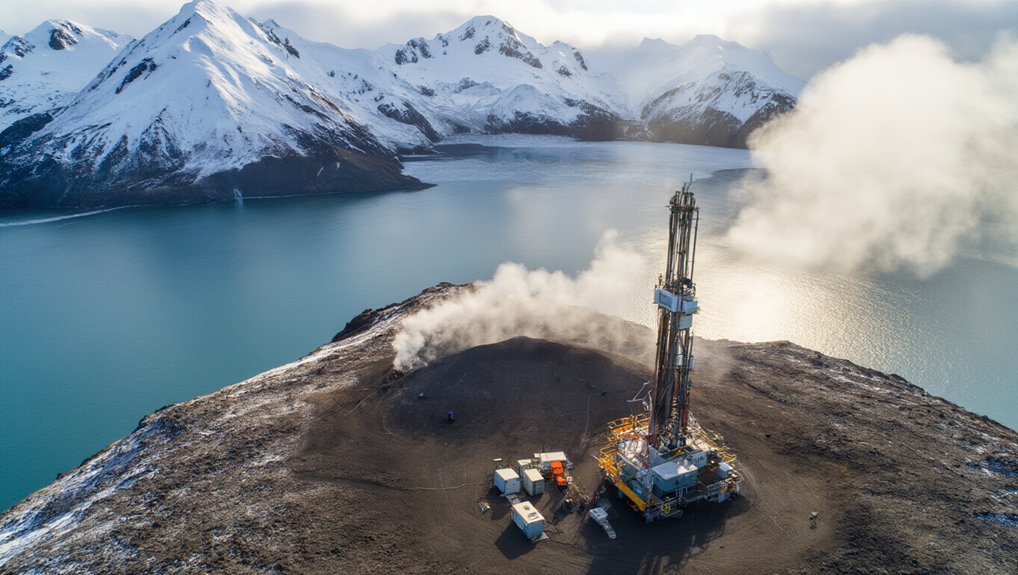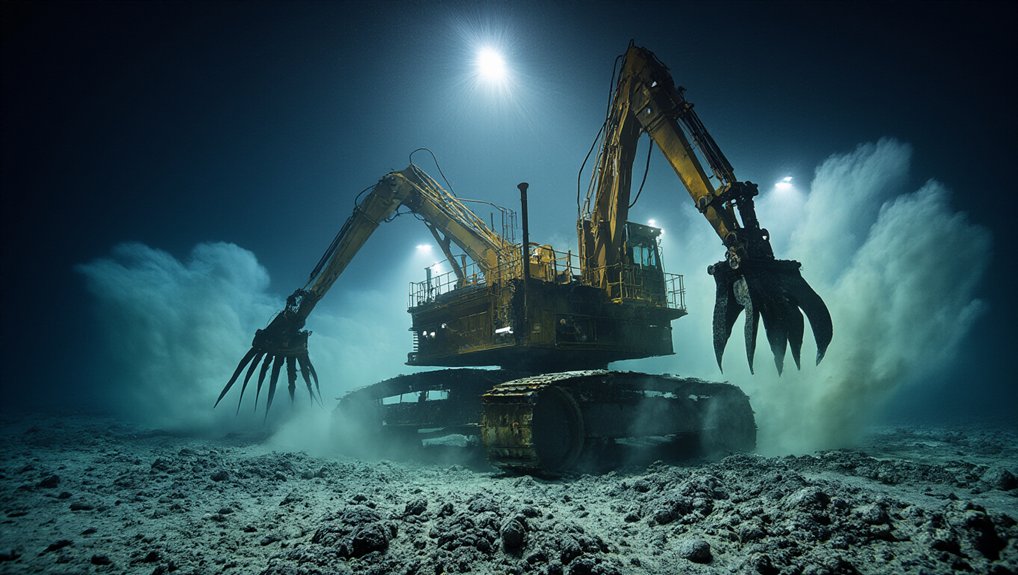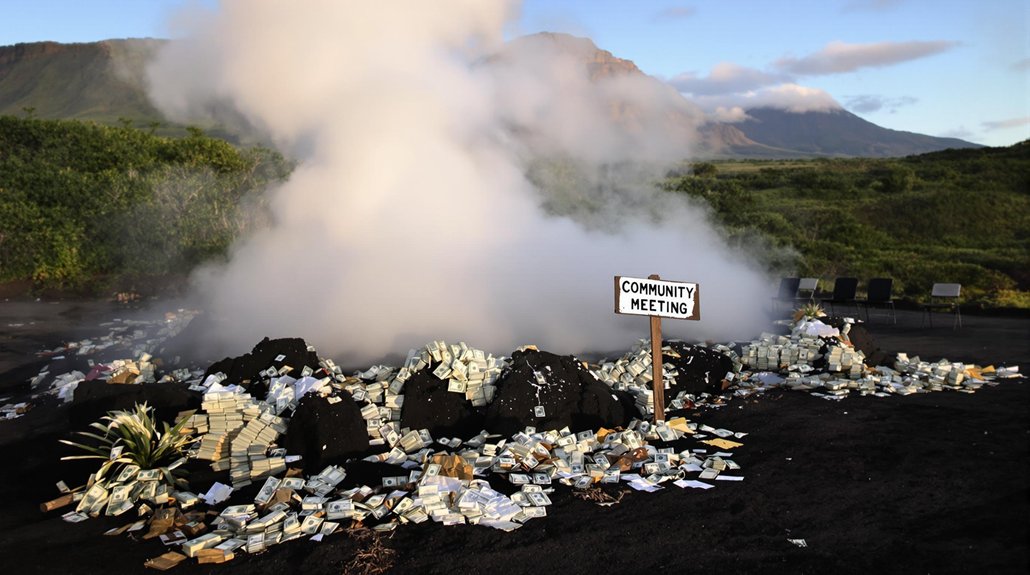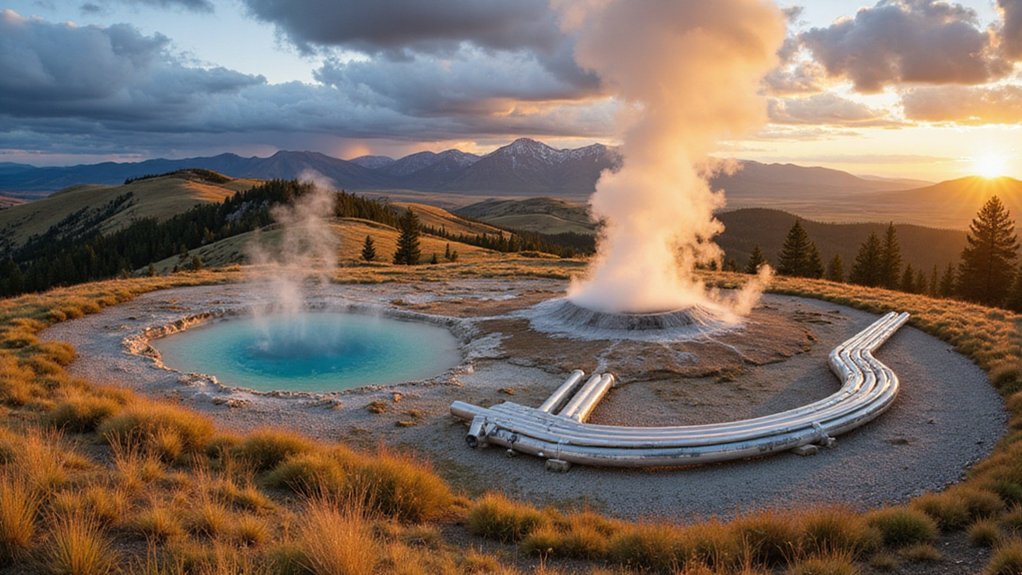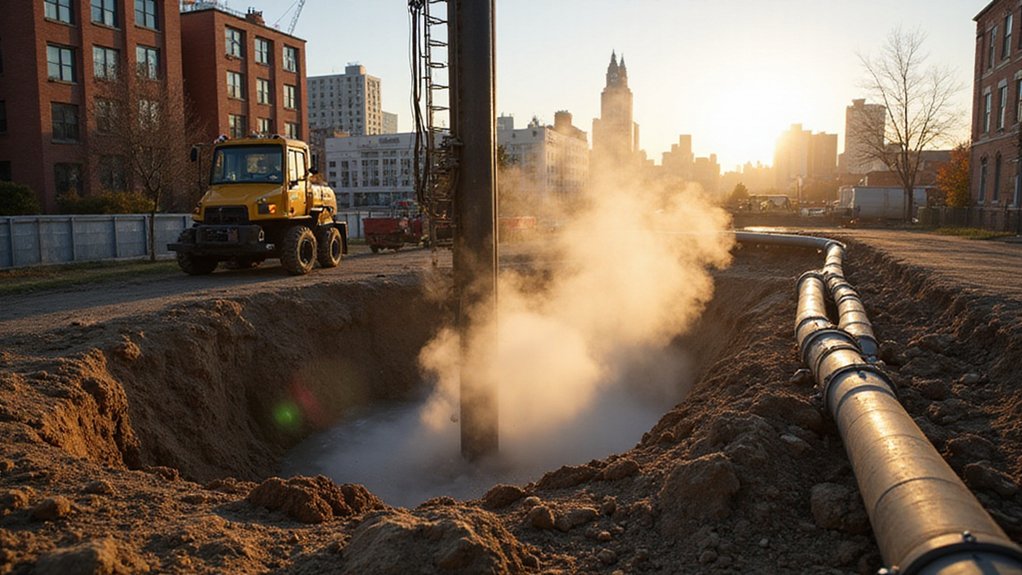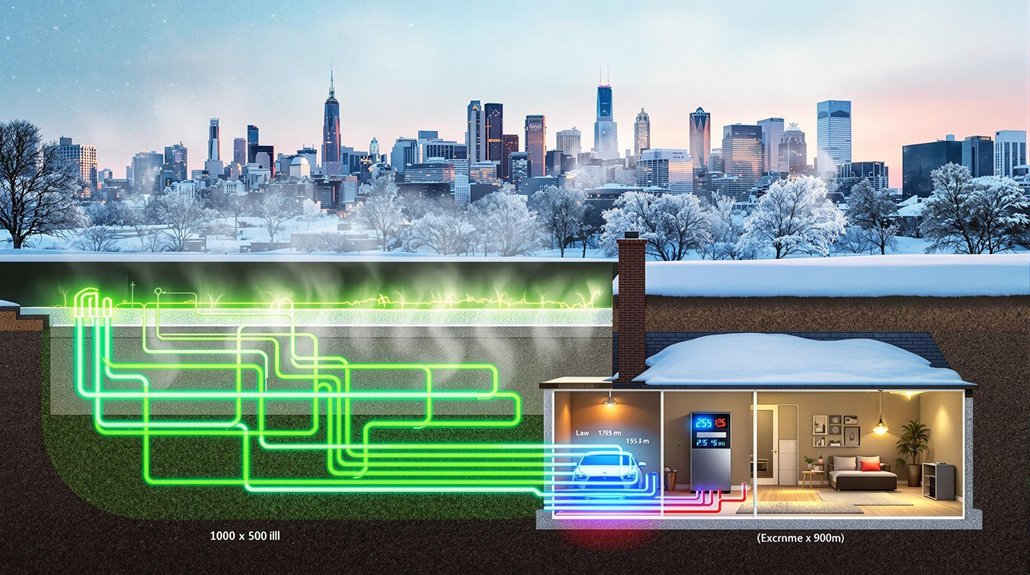Alaska’s getting serious about geothermal energy, and they’re starting with a volcano. GeoAlaska plans to drill its first geothermal well on Augustine Island in 2025, right into an active stratovolcano. Because apparently regular drilling wasn’t exciting enough.
The company scored big in April 2024 when Alaska’s Department of Natural Resources handed them a 7,299-acre geothermal prospecting permit. That’s a 240% increase from their original site area. Combined with their previous 3,031-acre permit and partner Ignis H2 Energy Inc.’s holdings, they’re now sitting on over 10,000 acres of volcanic real estate.
The permits cover the entire southern half of Augustine Island and allow both exploratory and production drilling.
Mount Augustine’s shallow magma chamber makes this project particularly promising. The mapped prospects could generate up to 200 megawatts of electricity at a risked P50 level. That’s substantial power for Alaska’s grid, especially with Cook Inlet‘s gas production declining faster than a politician’s approval ratings.
GeoAlaska’s been busy with magnetotelluric surveys and rock sampling over recent field seasons. A 2023 AMT survey delivered preliminary subsurface models, but they’re going deeper. A high-resolution MT survey planned for mid-2024 will map deep resistivity and sharpen resource definition. The new data collection will provide a 10-fold increase in useful geophysical data compared to their initial surveys.
An independent geothermal reservoir study completed in 2023 guides their exploration strategy. The study identified three shallow zones at approximately 500 meters depth with low resistivity signatures indicating potential hydrothermal activity.
Two exploratory wells are scheduled for 2025, targeting shallow geothermal zones. Success means demonstrating fluid flow between wells – critical for future production. More production and injection wells will follow if initial drilling hits paydirt.
Real-time geological and geophysical data collected during operations will inform the drilling campaign.
The project fits Alaska’s renewable energy push, backed by expanded permits and Federal Inflation Reduction Act support. With an impressive capacity factor above 90%, geothermal energy provides reliable power regardless of weather conditions, making it an ideal solution for Alaska’s challenging climate. Geothermal output won’t just generate power; it could support remote heating and industrial applications too.
Alaska Volcano Observatory monitors the site alongside the Department of Natural Resources, ensuring regulatory compliance. If successful, Augustine could become the template for tapping Alaska’s other volcanic geothermal resources.
Drilling into an active volcano for clean energy? Bold move, Alaska. Bold move.
References
- https://www.thinkgeoenergy.com/geoalaska-to-do-more-geothermal-exploration-at-augustine-island-alaska/
- https://geoexpro.com/finding-a-hotspot-in-alaska/
- https://alaskapublic.org/programs/talk-of-alaska/2025-06-03/alaskas-geothermal-potential-talk-of-alaska
- https://www.ktoo.org/2022/05/02/geothermal-company-looks-to-augustine-volcano/
- https://energynews.pro/en/geoalaska-extends-geothermal-exploration-on-augustine-island/
